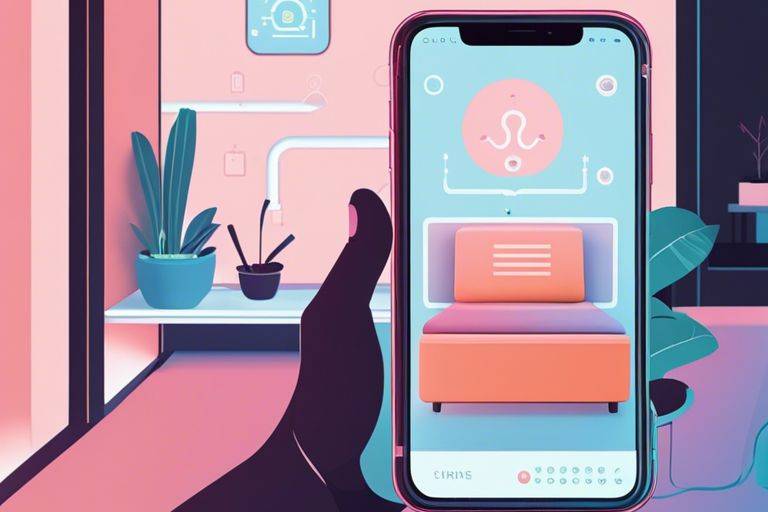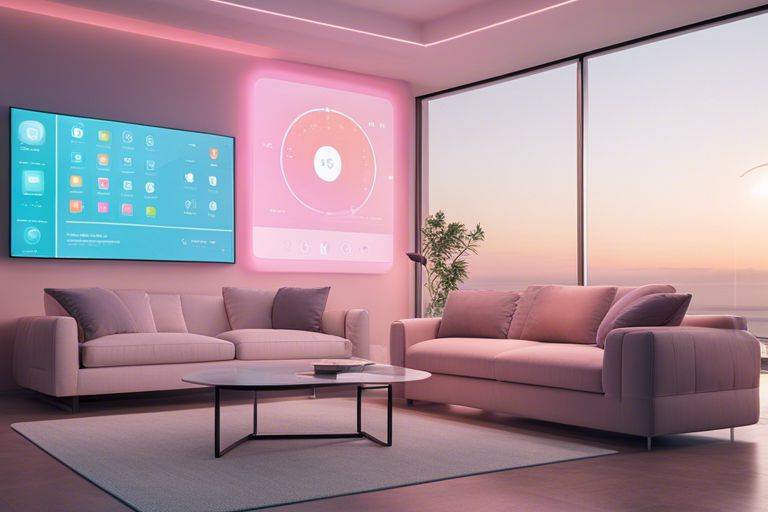Living in the digital age has transformed the way we interact with our surroundings. With the advent of Internet of Things (IoT) devices, our homes are becoming smarter, more efficient, and interconnected. But what if we could take this a step further and create a second brain that helps us navigate our daily lives seamlessly? By integrating our second brain with IoT devices, we can achieve a new level of smart living that brings together the power of technology and human cognition.
Key Takeaways:
- Efficient Integration: Integrating your second brain with IoT devices can streamline productivity and organization.
- Enhanced Automation: Automating tasks through IoT devices can save time and simplify daily routines.
- Data Synchronization: Ensuring seamless synchronization of data between your devices and second brain enhances efficiency.
- Personalized Alerts: Setting up personalized alerts through IoT devices can help you stay on top of tasks and deadlines.
- Improved Decision Making: Accessing relevant information through your second brain integrated with IoT devices can lead to better decision-making.
- Enhanced Connectivity: Connecting various IoT devices to your second brain can create a comprehensive network for all aspects of your life.
- Continuous Learning: Utilizing IoT devices to feed information to your second brain allows for ongoing learning and growth.

Understanding the Internet of Things (IoT)
What is IoT?
Internet of Things (IoT) refers to a network of interconnected devices that can communicate and share data with each other over the internet. These devices include everyday objects embedded with sensors, software, and other technologies that enable them to collect and exchange information. Some examples of IoT devices include smart thermostats, wearable fitness trackers, and smart home assistants like Amazon Echo or Google Home.
How IoT is Changing Our Daily Lives
To enable a more convenient and efficient lifestyle, IoT is revolutionizing the way we interact with technology on a daily basis. From managing energy consumption in our homes to tracking our health and fitness goals, IoT devices have seamlessly integrated into various aspects of our lives. It has given us the ability to monitor and control our environments remotely, making tasks such as adjusting the temperature, turning off lights, or even brewing coffee as simple as a voice command or a tap on a smartphone app.
The Second Brain Phenomenon
Now, have you ever heard of the concept of a “second brain”? If not, it’s time to explore this fascinating phenomenon. Building a Second Brain: The Definitive Introductory Guide offers a comprehensive overview of how you can create a digital second brain to enhance your productivity and organization in today’s fast-paced world.
Defining Your Second Brain
The concept of a second brain refers to the idea of using digital tools and systems to augment your cognitive abilities. It involves capturing, organizing, and retrieving information effectively to support your thinking and decision-making processes. This practice enables you to offload mental burden and free up space in your primary brain for more critical tasks and creative thinking.
The Benefits of Having a Digital Assistant
Having a digital assistant as part of your second brain can revolutionize the way you work and live. By leveraging artificial intelligence and IoT devices, you can automate mundane tasks, schedule reminders, and access information swiftly. A digital assistant can act as your personal productivity coach, helping you stay on top of your priorities and deadlines.
For instance, having a digital assistant can help you manage your daily schedule efficiently, sending you timely reminders and updates. It can also assist in organizing your notes, documents, and contacts, making information retrieval a breeze. With a digital assistant by your side, you can enhance your productivity and focus on what truly matters.
Synchronizing IoT Devices with Your Second Brain
The Basics of Device Integration
Unlike traditional home automation systems, integrating IoT devices with your second brain opens up a whole new world of possibilities. With the use of smart assistants like Alexa or Google Home, you can control various devices in your home using just your voice or a mobile app. This integration allows for seamless communication between your devices, making your home truly smart and efficient.
Personalizing Your Smart Home Experience
Smart living is all about personalization. With IoT devices synchronized with your second brain, you can create customized routines and settings tailored to your preferences. Imagine waking up to your favorite music playing, the lights gradually turning on, and the coffee machine starting to brew – all done automatically based on your morning routine. This level of personalization not only saves you time and effort but also enhances your daily life experience.
Another benefit of personalizing your smart home experience is the ability to set up specific triggers and actions based on your habits and schedule. For example, you can program your lights to dim during movie nights, or have the thermostat adjust itself when you leave for work. This level of automation not only adds convenience but also contributes to energy savings and overall comfort.
The Security and Privacy of Smart Living
Your What Is a Smart Home Hub and Do You Need One?
Protecting Your Digital Footprint
Digital security and privacy are crucial aspects of smart living. With the integration of IoT devices and your second brain, it’s crucial to safeguard your digital footprint. Here are some key ways to protect your online presence:
- Use strong, unique passwords: Ensure that each device and account has a distinct password to prevent unauthorized access.
- Enable two-factor authentication: Add an extra layer of security by requiring a code in addition to your password for access.
Advanced Security Protocols for Your IoT Devices
Protocols
Your IoT devices are at the forefront of your smart living ecosystem, making security protocols critical for safeguarding your data and privacy. Here are some advanced security measures you can implement:
- Secure Wi-Fi network: Ensure your network is password-protected and encrypted to prevent unauthorized access.
- Update firmware regularly: Keep your devices’ software up to date to patch vulnerabilities and enhance security.

Future of IoT and Second Brain Convergence
Despite the growing advancements in IoT devices and the proliferation of second brain technology, there is still much untapped potential in the convergence of these two domains. A recent study published here explores the potential of a Knowledge-Based Remote E-Coaching Framework Using IoT, indicating the direction towards a more seamless integration of these technologies.
Predictions and Emerging Trends
Predictions: As we look towards the future, it is clear that the synergy between IoT devices and second brain technology will only deepen. Emerging trends suggest that these technologies will become increasingly interconnected and intelligent, providing users with personalized and intuitive experiences that enhance daily living.
Preparing for the Next Wave of Smart Technology
Second: It is crucial for individuals to start preparing for the next wave of smart technology by familiarizing themselves with how IoT devices and second brain technology can work together harmoniously. By staying informed and updated on new developments in these fields, individuals can ensure they are ready to leverage the full potential of these technologies.
To fully embrace the future of IoT and second brain convergence, it is crucial to stay proactive and adaptable. Being aware of the potential benefits and pitfalls of these technologies can help individuals make informed decisions about integrating them into their lives. By staying engaged with the latest trends and advancements in IoT and second brain technology, individuals can position themselves to lead more connected, efficient, and empowered lives.

Troubleshooting Common Issues
Overcoming Connectivity Problems
Once again, you find yourself frustrated with your smart devices not connecting properly. It’s imperative to troubleshoot connectivity issues to ensure your IoT ecosystem runs smoothly. To overcome these problems, start by checking your Wi-Fi connection and ensuring that all devices are within range. Restarting your router, updating device firmware, and reconfiguring network settings can also help establish a stable connection.
Ensuring Compatibility Among Various Devices
To avoid compatibility issues among your IoT devices, make sure to verify product specifications and compatibility lists before making a purchase. Ensure that all your devices communicate effectively by choosing ones that use the same communication protocols. This will prevent hiccups in your smart home system and ensure seamless integration.
Various IoT devices come with different protocols and standards that may not always work well together. It’s important to research and select devices that support open standards to enhance interoperability and prevent incompatibility issues.
Summing up
Conclusively, integrating your second brain with IoT devices can streamline your daily routines, enhance productivity, and simplify your life. The ability to access your notes, reminders, and important information seamlessly across all devices allows for a more organized and efficient way of living. By syncing your second brain with smart devices, you can stay on top of tasks, manage your schedule effectively, and stay connected no matter where you are.
FAQ
Q: What is meant by integrating your second brain with IoT devices?
A: Integrating your second brain with IoT devices refers to the concept of using smart devices connected to the internet to enhance your cognitive abilities and daily activities, crucially creating a digital extension of your brain to help you in various tasks.
Q: How can IoT devices assist in smart living and integrating a second brain?
A: IoT devices can assist in smart living by providing real-time data, automation, reminders, and personalized recommendations that can help you make informed decisions and simplify your everyday routines, thus acting as an extension of your cognitive processes.
Q: What are some examples of IoT devices that can be integrated into your second brain?
A: Examples of IoT devices that can be integrated into your second brain include smart assistants like Amazon Alexa or Google Home, smart thermostats, smart security systems, wearable fitness trackers, smart lights, and more.
Q: How can integrating IoT devices with your second brain improve productivity?
A: By leveraging IoT devices with your second brain, you can streamline tasks, automate processes, set reminders, access information quickly, track your habits and preferences, and create a more efficient and organized environment that can significantly enhance your productivity.
Q: Is it safe to integrate IoT devices with your second brain in terms of privacy and security?
A: It is crucial to ensure that you take necessary precautions such as using secure networks, updating device firmware regularly, setting strong passwords, managing permissions, and being cautious about sharing personal information to mitigate privacy and security risks when integrating IoT devices with your second brain.
Q: How can integrating IoT devices with your second brain improve convenience in daily life?
A: By integrating IoT devices with your second brain, you can create customized routines, control devices remotely, receive notifications and alerts, automate repetitive tasks, access information hands-free, and simplify complex processes, ultimately enhancing convenience and comfort in your daily life.
Q: What are some tips for effectively integrating your second brain with IoT devices for smart living?
A: Some tips for effectively integrating your second brain with IoT devices include selecting devices that align with your needs and preferences, setting up personalized routines, exploring integration possibilities with compatible devices, staying updated on new features, and experimenting with different functionalities to maximize the benefits of smart living.



